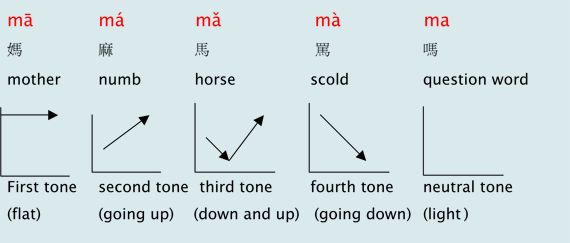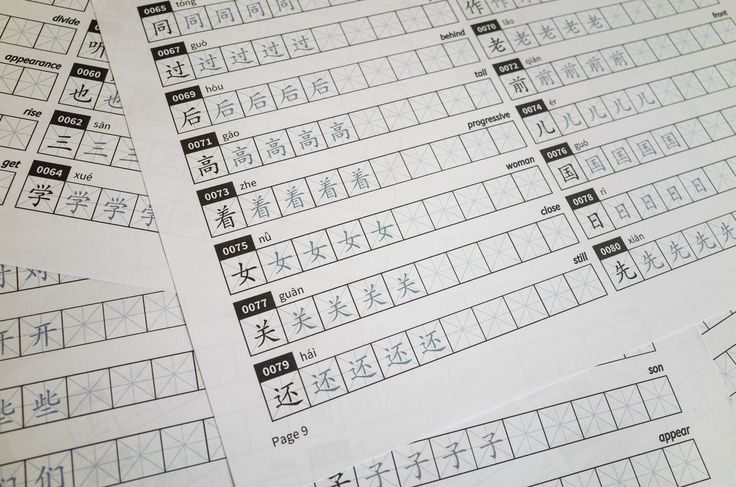Millions of people speak Mandarin Chinese, but for new students, becoming fluent enough to join them is not so easy. There are of course difficulties with learning any new language, but for some students Chinese is so different from their mother tongue they may make unintentional mistakes in the early stages. What are the top five mistakes students make when learning Chinese, and how can you fix them?
Learning Chinese doesn’t have to be lonely or difficult. Check out our dozens of online 1-on-1 and group Chinese classes here!
Mistake 1- Ignoring the Tones
Chinese is a “tonal language.” Along with Thai, Yòrúba, Punjabi, Navajo, and other languages, tonal languages use differences in pitch to distinguish between words. For native speakers of a non-tonal language like English, Spanish, or Arabic, the tones in Mandarin Chinese can be extremely difficult in the beginning and first-time students often think that it’s not important to learn these.
Maybe this mindset can get you through the first few lessons. But eventually you will run into major trouble: there’s a limit to how much Mandarin you can learn if you don’t pay attention to the tones.

Let’s look at two words:
买mǎi and 卖mài. Both these characters have the exact same pronunciation: mai (pronounced like “my”). But they each have different tones. 买 is pronounced with the third tone (a down-and-up pitch). 卖 is pronounced with the fourth tone (a curt, shorter pitch that slopes downward). These words mean completely different things: 买mǎi means “to buy” and 卖mài means “to sell.”
There are four tones in Mandarin Chinese: first tone ( “-” a high flat pitch), second tone (“/” a sloping upward pitch), third tone (“v” a down-and-up pitch), and fourth tone (“\” a sharp, sloping downward pitch). There is also a neutral tone, sometimes called a “fifth tone.”
My first Chinese teacher had me practice the tones by physically moving my head in the same direction as the tone by looking down and up when saying the third tone, etc. Yes, I looked a bit silly–but connecting your mind, muscles, and mouth to be able to say the sound properly is an important lesson!
Mistake 2- Ignoring stroke order
Students at every level face the temptation to give up learning “stroke order:” that is, the correct order that the individual lines of a character should be written. Chinese characters may look complicated with many lines and shapes, but they’re written by following a few logical and geometric rules: top to bottom, left to right, horizontal before vertical, inside to outside, and a few other more specific ones.

It’s exactly like learning how to paint or write calligraphy. Many students may think this is a waste of time if they’re only going to type Chinese characters. But if you can’t even write your Chinese name legibly or properly, it won’t reflect well on you as a student. Remembering the building blocks of each character in the proper order will save you time overall. And it will help your handwriting be more legible and readable.

Mistake 3 – Not practicing frequently enough
People say that practicing a bike is easy because you only need to learn it once–your muscles will remember the motions even if you don’t bike for years.
Chinese is not like this. Because of needing to practice the four tones, memorize characters, new vocabulary, and new grammar, students who don’t practice a little bit each day or week run the risk of forgetting all the progress they made the last week! Learning to write characters and pronounce new sounds and tones does require you to train your hand and mouth muscles in new ways. Like going to the gym consistently for good results, you shouldn’t take a lot of time off.
Try practicing Chinese for just 15 minutes a day. You’ll definitely see your ability to remember past lessons increasing over time.

Mistake 4 – Trying to directly translate
This is an extremely common mistake when learning Chinese, even for intermediate students. In some languages, it might be possible for you to directly translate words and sentences. This is not the case in Chinese. Students need to adapt their learning strategy: instead of trying to translate word by word, focus on the central meaning of the sentence and translate that using proper Chinese grammar.
I want to go run in the park tomorrow morning: Can you translate this sentence word-by-word into Chinese?
我要去跑步在公园明天早上。This sentence is directly word-for-word translated but still incorrect because it follows English sentence order. The basic sentence order in Chinese is Subject+Verb+Object, and the time word or phrase goes directly before or after the subject.
我明天早上要去公园跑步。 This is the correct translation of the English sentence. In English, this order makes no sense: “I tomorrow morning want to go to the park run.” But this follows proper Chinese grammatical order (Subject+[Time Word]+Verb+Object) and is thus correct.

Mistake 5- Not producing any Chinese
You can listen to as many Chinese lessons or read as many texts as you want, but in the end, your language skills will not improve unless you begin producing: speaking and writing on your own to put what you learn into practice. This is one of the biggest mistakes when learning Chinese that you can fix at every level.
If you have Chinese friends, make an effort to speak to them in Chinese, even just for ten minutes a day. Keep a daily journal in Chinese and practice writing what you see and do during the day. This is obviously more difficult than passively absorbing information or simply copying vocabulary words. But using Chinese in real life is the only way to truly improve.
Even if you’re studying from home, we have the resources to help you here: Best FREE Ways to Self-Study Chinese Online

How can you fix these mistakes and take your Chinese to the next level? Browse dozens of online individual and group Chinese courses from top schools and universities here:
- 9 Best Schools to Study Chinese in Beijing in 2025! - April 6, 2025
- How to Apply to the CSC Scholarship Step by Step - March 30, 2025
- BLCC Chinese Language Program Deadline: August 30, 2025 - March 21, 2025
